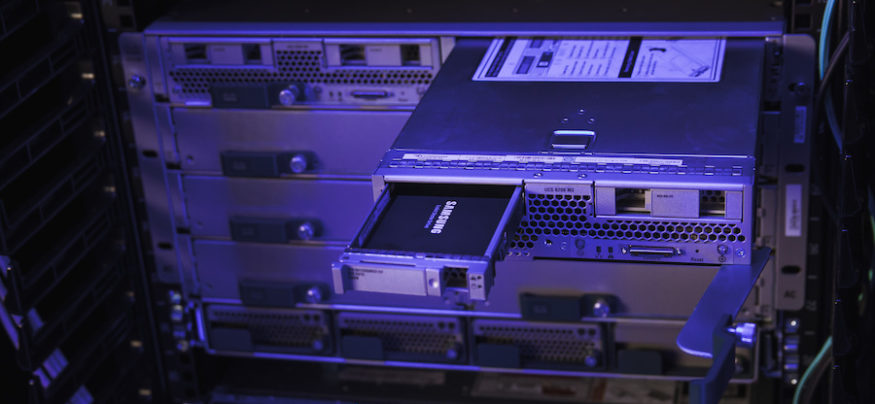The majority of enterprises require multiple — often dozens or more — server racks to accommodate the mass amounts of digital data flowing through a company’s network. Relying on this technology requires trust that storage units will operate seamlessly in a 24/7, always-on capacity.
The Samsung 983 DCT is a new solid state drive (SSD) for those seeking high SSD read/write speed with good value. It’s available in two form factors: 2.5-in. (U.2) and M.2, and in 960GB and 1.92TB capacities, supporting PCIe NVMe interface.
Specifically, the 983 DCT is intended for next-gen data centers that support PCIe interface and are read intensive. The drive provides maximum read speeds of 3,000 MB/s and maximum write speeds of 1,430 MB/s in the M.2 form factor. Those speeds increase to 3,400 MB/s and 2,200 MB/s, respectively, in the U.2 form factor.
Data Center Value
Where the 983 DCT provides its greatest value is in the high read, lower write data center application space, offering 1.3 drive writes per day (DWPD) for three years. There are many types of applications that write relatively infrequently, and read often. These include content delivery networks, photo and video servers and basic web servers. Given the cost differential between read-intensive and write-intensive SSDs, it is often efficient to use read intensive drives where possible to save the more expensive write intensive drives for where they’re needed most.
Understanding SSD Endurance and Over-Provisioning
Get your free guide to optimizing SSD over-provisioning for improved cell endurance. Download Now
However, while they may have similar read performance, using consumer grade SSDs in a data center application isn’t recommended. Consumer grade SSDs can have less endurance and shorter warranties, and are generally not intended for 24/7 operation. Using consumer SSDs in the data center will have a noticeable lack of sustained performance, and the warranty is automatically void.
End-to-End Data Protection
In addition to high performance, the 983 DCT brings with it end-to-end data protection, which provides data integrity over the whole data path, and ensures that even power outages will not produce corrupted data.
Data center grade SSDs offer value pricing with the level of performance necessary for read intensive applications, and the 983 DCT can enable storage administrators to save on costs and still maintain high performance. They can then reserve the write intensive SSDs for applications such as real-time data analytics and database traffic that require the highest write speeds over long periods.
As video streaming, app delivery and other high-bandwidth applications continue to proliferate, the number of simultaneous users downloading files requires stronger hardware. An SSD like the 983 DCT offers impressive transfer rates and access times with higher efficiency while requiring significantly lower power and less cooling loads than previous hard drives.
In addition — as security is always a priority in data storage — the Samsung SSD Toolkit allows supervision and control of SSDs while in operation, as well as secure erase functionality when needed. The toolkit allows updating of all Samsung data center SSDs at once rather than individually, and can also perform self-monitoring, analysis and reporting technology (SMART) data functions.
Which SSD works best for your workloads, and how can they be deployed in your data center? Take this quick assessment to find out.








